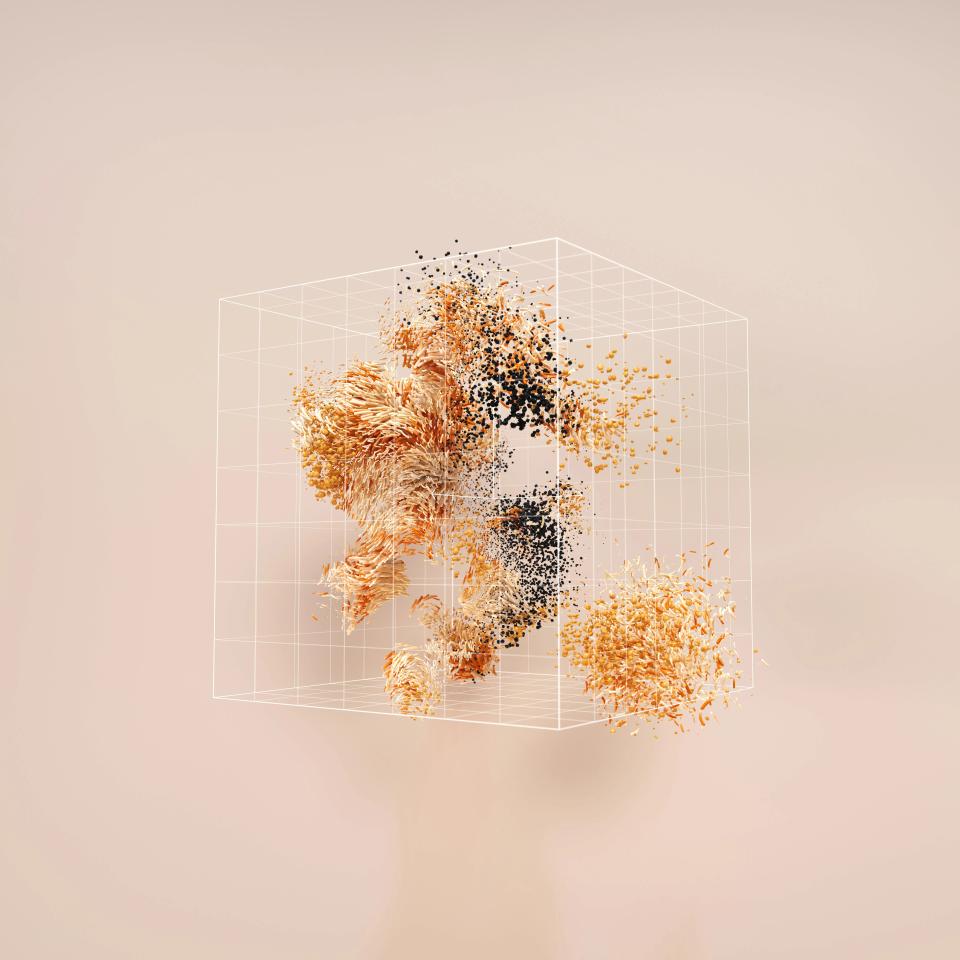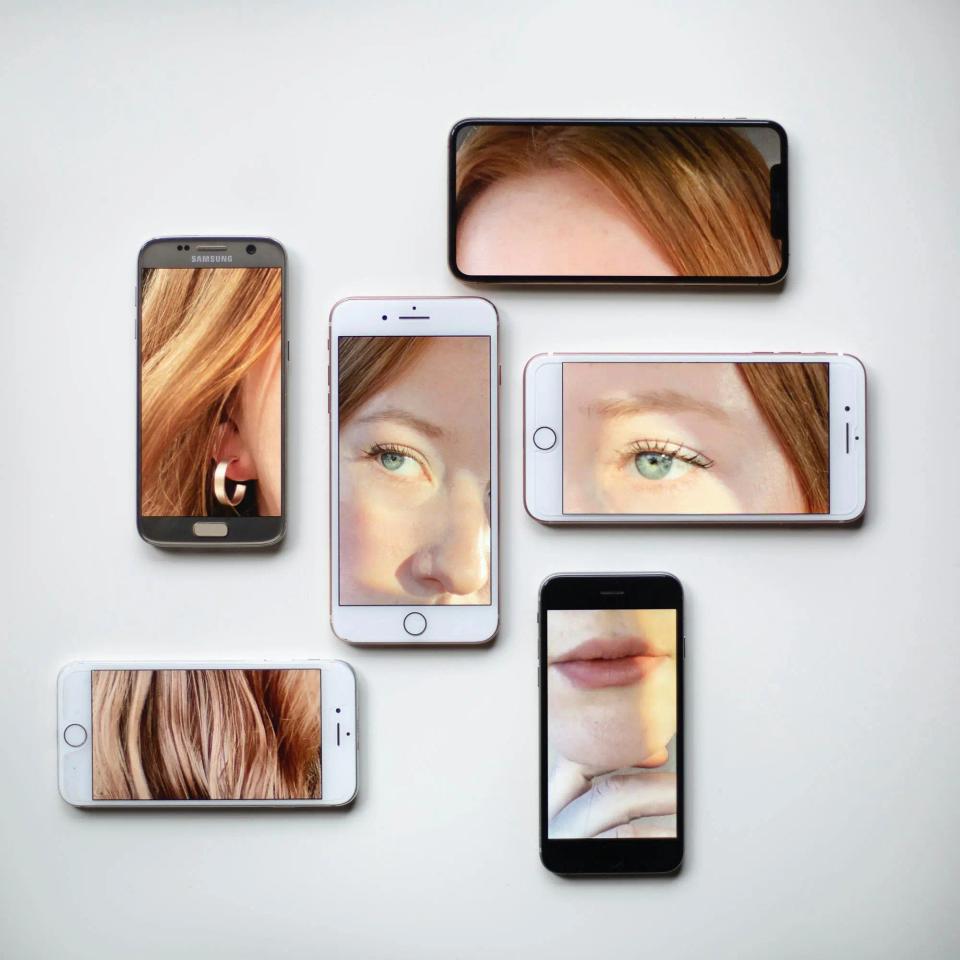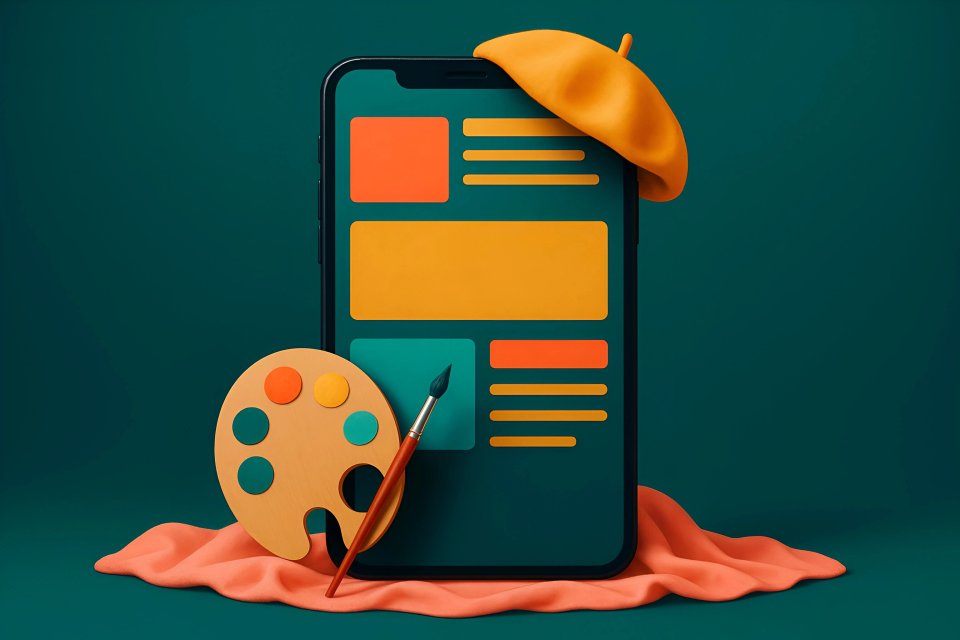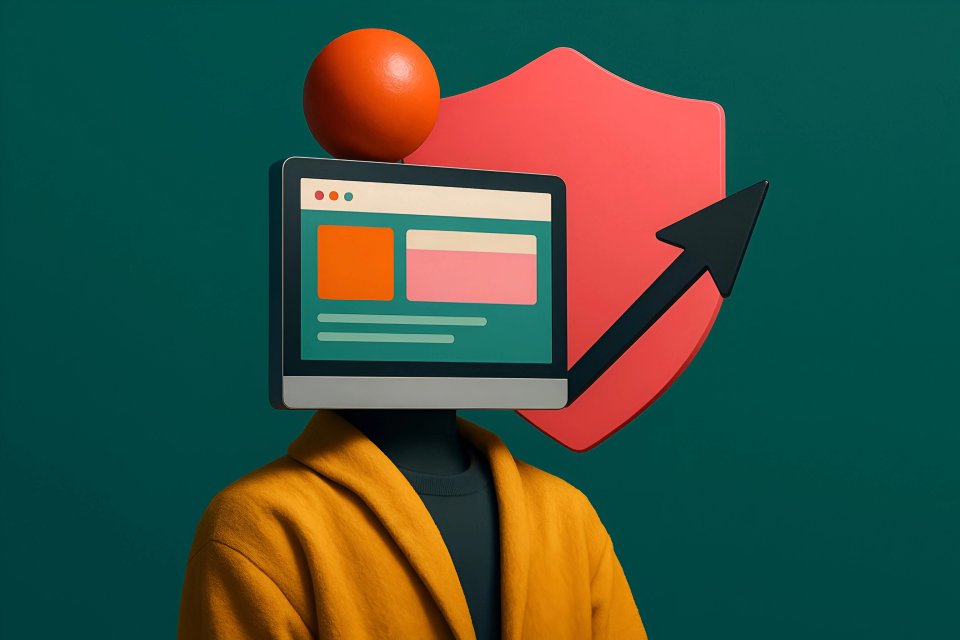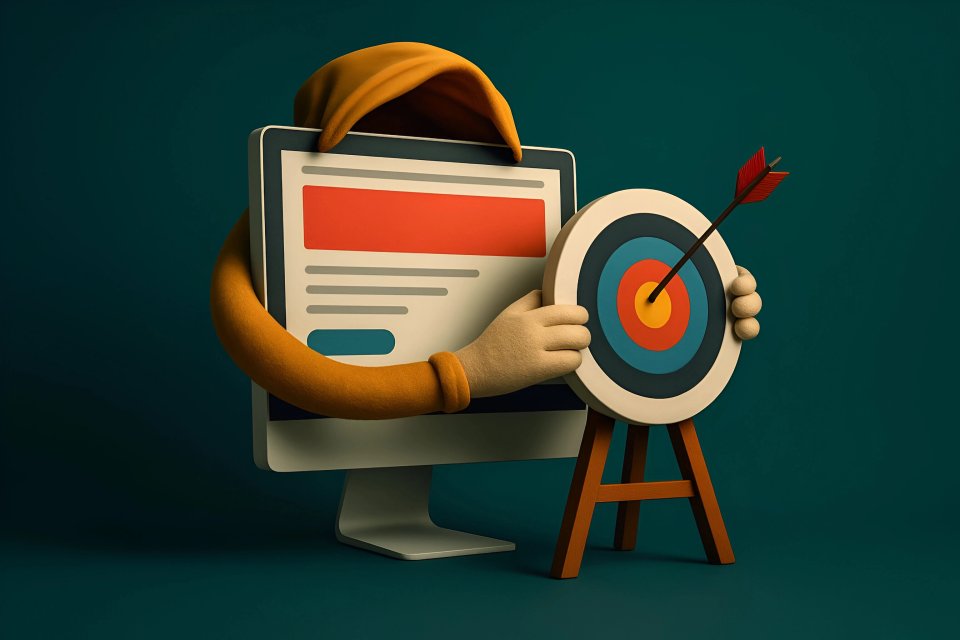Is your website just a beautiful brochure, gathering digital dust? Or is it a relentless, powerful brand ambassador, forging real connections and driving your business forward? Many businesses pour resources into stunning designs or chase seamless functionality. But the real magic, the kind that makes your bottom line sing, ignites when these two explosive forces—User Experience and Branding—unite.
In today's hyper-competitive digital landscape, users don't just demand; they demand both. They crave intuitive, effortless experiences. And they yearn for a genuine connection with the brands they choose. Anything less, and they're gone in a click, lost to a competitor who understands this crucial alchemy.
So, what are these powerhouses? User Experience (UX) is the sum total of how a person feels when interacting with your website – its ease of use, its efficiency, its sheer enjoyability. Think of it as the smooth, invisible pathway guiding them to their desires. Branding, on the other hand, is the soul, the distinct personality, the unforgettable story of your business, communicated through every visual and every word. It's what makes them remember you, trust you, and choose you. This post isn't just about why combining UX and branding is a good idea; it's about why it's absolutely essential for your website's survival and triumph. We'll dive deep into how to strategically weave them together, creating a cohesive digital presence that screams your brand at every satisfying click, captivating users and converting them into loyal fans.
Understanding the Pillars: UX and Branding in Web Design
To truly grasp their combined power, let's first understand these titans individually. What makes them tick? And why are they so critical to your online success?
What is User Experience (UX) in Web Design?
Forget clunky interfaces and confusing navigation. True User Experience (UX) in web design is about crafting an online journey that feels utterly natural, almost invisible. It’s built on core components like intuitive usability, ensuring anyone can achieve their goals; accessibility, welcoming every user regardless of ability; smart information architecture, making content easy to find; and thoughtful interaction design, making every click and scroll responsive and meaningful. As the Nielsen Norman Group points out, UX encompasses all aspects of the end-user's interaction with the company, its services, and its products, extending beyond mere usability to include the user's emotions and satisfaction.
The ultimate goal of UX? To make your user's interaction as simple, efficient, and downright pleasant as humanly possible. Imagine the relief your visitor feels when they land on your site and everything just works. This isn't just about avoiding frustration; it's about actively building satisfaction and ensuring users can complete their tasks effortlessly. When UX is done right, it directly impacts whether users perceive your brand as competent and trustworthy, or as a source of irritation.
This focus on the user's journey, from their first impression to their final action, is what transforms a website from a static page into a dynamic tool. It’s about understanding their needs so deeply that you anticipate them. At CaptivateClick, our UI/UX Design services are engineered to achieve precisely this, creating experiences that feel custom-made for your audience.
What is Branding in Web Design?
Now, let's talk about the heart and soul: your branding. In web design, branding is far more than just a logo slapped in the corner. It's the consistent, compelling communication of your visual identity—your logo, your distinct color palette, your chosen typography, and the style of your imagery. It’s also about your brand voice and tone, the values your business champions, and the unique brand story you tell. According to the Interaction Design Foundation, branding in UX design is about creating a unique identity that fosters recognition and emotional resonance.
The grand aim of branding in your website is to clearly communicate who you are, what you stand for, and, crucially, to forge an emotional connection with your audience. You want them to feel something when they interact with your brand. This emotional tether is what builds unwavering recognition, deep-seated trust, and ultimately, fierce loyalty. In fact, over 80% of consumers cite consistent branding across all platforms as a key factor in building that precious trust.
Your website is often the first and most significant touchpoint for your brand. It’s your digital handshake, your storefront, your chief storyteller. CaptivateClick’s comprehensive branding services, from logo design and brand strategy to visual identity and brand guidelines, ensure this story is told powerfully and consistently.
The Unseen Connection: Why They Can't Live Without Each Other
Here’s the unvarnished truth: UX without strong branding is like a perfectly engineered car with no personality – functional, yes, but utterly forgettable. It might work well, but it won't inspire passion or loyalty. Users will get what they need and move on, your brand leaving no trace in their memory.
Conversely, strong, vibrant branding without good UX is like a stunningly beautiful sports car with a sputtering engine and flat tires. It might look incredible, but the frustrating, jarring experience will quickly tarnish that beautiful veneer, actively damaging your brand's perception. The Interaction Design Foundation rightly states that a generic UX undermines brand differentiation, while poor usability tarnishes even the strongest brand identity.
The sweet spot, the place where digital magic truly happens, is where a seamless, intuitive user experience feels distinctly and unmistakably like your brand. Every interaction, every visual cue, every piece of text works in concert, reinforcing who you are while effortlessly guiding the user. This synergy ensures your website isn't just a tool, but an experience that resonates deeply and builds lasting relationships.
The "Why": Tangible Benefits of Harmonizing UX and Branding
Why obsess over this marriage of user experience and branding? Because the payoff isn't just a prettier website. It's about real, measurable results that impact your authority, your engagement, and your profits.
Enhanced User Trust and Credibility
Want users to believe in you? To feel secure handing over their information or their hard-earned cash? A professional, visually consistent, and easy-to-use website is your frontline soldier in building that critical confidence. When every element aligns, when the experience is smooth and predictable, users instinctively trust you more. This isn't just a feeling; websites that effectively align UX with branding principles can see a significant increase in user retention, with some studies suggesting figures as high as a 45% boost because consistency reduces cognitive load and fosters comforting familiarity.
Increased Brand Recognition and Recall
Imagine your brand instantly popping into a potential customer's mind when they need your product or service. That's the power of consistent visual and interactive cues. When your website consistently uses your brand colors, typography, and tone of voice, and when interactions feel uniquely "you," it burns your brand identity into the user's memory. This consistent reinforcement makes your brand more memorable and easily recognizable amidst the digital noise. For instance, tools that help unify logos, typography, and color schemes can improve conversion rates by up to 200% when paired with intuitive navigation, as noted by HubSpot in relation to their Brand Kit Generator (Source 6, 10).
Improved User Engagement and Lower Bounce Rates
What happens when users genuinely enjoy being on your site? They stay longer. They explore more. They engage more deeply. A delightful experience that aligns with their expectations of your brand keeps them captivated, significantly reducing those dreaded bounce rates. Even technical UX aspects like page load speed have a massive impact; Walmart’s focus on page-load speed improvements directly correlated with a 2% conversion boost for every second of improvement, demonstrating how performance underpins engagement.
Higher Conversion Rates
This is where the rubber meets the road. A clear, trustworthy, and on-brand journey doesn't just feel good; it expertly guides users towards your desired actions, whether that's making a purchase, signing up for a newsletter, or requesting a quote. When UX and branding work together, they dismantle barriers to conversion. The ROI is staggering: investments in UX can yield an incredible 9,900% ROI. Just look at Airbnb, which achieved 30% higher bookings after streamlining their checkout process, a testament to UX refinement directly boosting conversions. CaptivateClick’s Conversion Optimization services are designed to fine-tune this journey, turning visitors into valuable customers.
Stronger Customer Loyalty and Advocacy
Want customers who not only come back but also sing your praises to others? Positive experiences that deeply resonate with your brand's essence create more than just repeat business; they forge lasting relationships and cultivate passionate advocates. When your website consistently delivers on its brand promise through an exceptional user experience, you're not just satisfying a need; you're creating fans. For example, Duolingo’s playful branding and gamified UX contribute to an impressively low 2.4% churn rate, proving that an enjoyable, on-brand experience builds fierce loyalty.
Practical Strategies: How to Weave UX and Branding Together (The "How-To")
Alright, you're convinced. UX and branding are a match made in digital heaven. But how do you actually make this marriage work on your website? It’s about deliberate, strategic choices at every stage of design and development.
Visual Consistency is Key
Your website's visuals are the most immediate expression of your brand and a critical component of its usability.
Think about your Color Palette: Don't just pick pretty colors. Use your established brand colors strategically to evoke specific emotions (that’s branding) and to guide the user's attention to calls-to-action or important information (that’s UX).
Your Typography is equally vital. Choose fonts that are, first and foremost, highly legible and accessible across devices (UX gold), while also perfectly reflecting your brand's personality – be it modern, traditional, playful, or sophisticated (branding power). As Adobe Fonts’ guidelines highlight, typography choices must balance legibility with brand personality.
And don't forget Imagery & Iconography. Select visuals and icons that are not only high-quality and distinctly on-brand but also serve a purpose in aiding user understanding and navigation (UX efficiency). CaptivateClick’s expertise in Visual Identity and Brand Guidelines ensures this consistency is baked into your digital DNA.
Content and Tone of Voice
Words have power – the power to clarify, persuade, and connect.
Your Messaging across the entire site, from attention-grabbing headlines to informative body text and compelling Calls to Action (CTAs), must be crystal clear, concise, and laser-focused on the user's needs (classic UX). Simultaneously, every word must consistently echo your brand's unique voice and personality (unmistakable branding).
Pay fierce attention to Microcopy. Those tiny bits of text – button labels, error messages, form field hints, tooltips – are golden opportunities. Well-crafted microcopy can significantly enhance the user experience by providing clarity and reassurance, and it can subtly reinforce your brand's character. For instance, Bumble’s reassuring microcopy like “You can change this later” effectively alleviates user anxiety, making the experience smoother and more brand-aligned.
Interaction Design & Animations
How your website reacts to users is a profound part of their experience and a subtle branding opportunity.
Feedback & Responsiveness are paramount. When a user hovers over a button, clicks a link, or submits a form, the site should provide immediate, clear feedback (UX best practice). The style of these interactions—the way elements transition or respond—should also feel appropriate for your brand's overall style, whether that's playful and bouncy, sleek and sophisticated, or clean and minimalist.
Use Animations & Motion with purpose. Don't just add animations for flashy effects. Instead, employ them to enhance usability, such as smooth loading indicators, visual cues that draw attention to important elements, or transitions that orient the user. These can also add a delightful touch of brand personality, but ensure they never become distracting or hinder performance. Material Design’s principles advocate for motion that feels “clear and coherent,” guiding the user naturally.
User Journey Mapping with Brand Touchpoints
Step into your users' shoes. Map out the key paths they take on your website – from landing page to conversion, or from browsing products to seeking support.
At each significant touchpoint in these journeys, ask two critical questions: "How does this specific interaction, this piece of content, or this visual element reinforce our core brand values and message?" And, equally important, "Is this step intuitive, easy, and frustration-free for the user?" This dual lens ensures that your brand story is woven into a seamless, user-centric experience.
Accessibility as a Brand Value
Designing for accessibility isn't just a compliance checkbox; it's exceptional UX and a powerful brand statement.
When you design for everyone—ensuring things like proper alt text for images, keyboard navigability, sufficient color contrast, and readable fonts—you're creating a better experience for all users. This commitment also communicates volumes about your brand: that you are inclusive, considerate, and genuinely care about every individual who interacts with your digital presence. Adhering to guidelines like the WCAG 2.1 not only meets standards but also positions inclusivity as a core brand value.
Mobile-First Approach: Consistent Brand Experience Across Devices
Your brand experience can't afford to shatter on smaller screens. With Google’s mobile-first indexing now standard, ensuring your branded UX translates flawlessly to smartphones and tablets is non-negotiable.
This means more than just responsive design; it means thoughtfully adapting your branding elements and user flows for the mobile context. Your logo, calls-to-action, navigation, and overall brand feel must remain consistent and effective, regardless of screen size. CaptivateClick’s deep expertise in mobile apps and responsive web design guarantees this seamless, on-brand experience across all devices.
Bringing it to Life: Examples & Case Studies (To Stand Out)
Theory is great, but seeing this synergy in action is where the understanding truly clicks. Let's explore how different types of brands can masterfully blend UX and branding.
Hypothetical Examples
Imagine a Luxury Brand website. The user experience would be elegant and minimalist, with effortless navigation leading to high-end, aspirational photography. The language would be sophisticated and evocative, reinforcing exclusivity and desire. Every interaction would feel polished and refined, mirroring the quality of their physical products.
Now picture a cutting-edge Tech Startup. Their website's UX would be clean, incredibly intuitive, and perhaps even a bit playful, reflecting innovation. The branding would be bold, modern, possibly using vibrant colors and dynamic graphics. The copy would be benefit-driven, clear, and concise, quickly communicating value and solving user problems with futuristic flair.
Consider a Non-Profit Organization dedicated to a social cause. Their website's UX would aim to be warm, inviting, and emotionally engaging, making it easy for users to learn, connect, and donate. Storytelling imagery featuring real people would be prominent, and the brand voice would be empathetic, inspiring, and urgent, fostering a sense of community and shared purpose.
CaptivateClick Success Stories
At CaptivateClick, we don't just talk about this synergy; we build it. We've witnessed firsthand the transformative power of integrating UX and branding for our clients. For example, in redesigning Hawkeye Advertising’s website, we focused on streamlining their service inquiry process (a key UX improvement) while infusing their bold, results-driven brand personality into every step, leading to a marked increase in qualified leads.
Similarly, for LexEnergy, a leader in sustainable energy solutions, ensuring their innovative branding was supported by an exceptionally clear and educational user experience was crucial. We developed an intuitive information architecture that made complex technical information accessible, reinforcing their brand position as a trusted, forward-thinking authority in the green energy space. These are just glimpses into how we make UX and branding dance in perfect harmony.
'At CaptivateClick, we believe that a website fails if it's only beautiful or only functional. True success lies in that perfect intersection where intuitive design amplifies a compelling brand story, creating an experience that users love and trust.' – [Name], Head of Design.
Expert Interview Snippet (If feasible for future expansion)
(Placeholder for a quote from an internal expert or a hypothetical industry leader on the topic. For instance: "Industry visionary [Expert Name] often says, 'Your brand is a promise to your customer. Your UX is how you deliver on that promise. If they aren't aligned, the promise is broken.' This underscores the critical need for integration.")
Common Pitfalls to Avoid
While the rewards of harmonizing UX and branding are immense, the path can be riddled with potential missteps. Being aware of these common pitfalls can save you from costly mistakes and user frustration.
Style Over Substance
This is the classic trap: a website that looks absolutely stunning, a true visual masterpiece, but is a nightmare to navigate. Buttons might be too small, text unreadable against busy backgrounds, or essential information buried under layers of artistic flair. Remember, websites with striking visuals but poor navigation can suffer significantly higher bounce rates, sometimes up to 88% higher, because users quickly abandon sites that cause frustration, no matter how beautiful.
Function Over Feeling
The opposite extreme is equally problematic: a website that is perfectly usable, efficient, and technically sound, but utterly devoid of personality. It works, but it feels generic, cold, and forgettable. Without the infusion of your unique brand identity, there's nothing to make an emotional connection, nothing to differentiate you from the countless other functional-but-bland sites out there.
Inconsistent Branding
Imagine clicking through a website where different sections look and feel like they belong to entirely different companies. Colors shift, typography changes, the tone of voice wavers – it's jarring and confusing for the user. This inconsistency erodes trust and dilutes your brand message, making it harder for users to form a clear perception of who you are. Comprehensive brand guidelines, like those famously used by companies such as Skype, are crucial for maintaining coherence across all touchpoints.
Ignoring User Feedback
You might think your blend of UX and branding is perfect, but your users are the ultimate judges. Failing to conduct user testing and gather feedback on how the combined experience resonates with your target audience is a critical oversight. What seems intuitive to you might be confusing to them, or a branding element you love might not connect as intended. Regular feedback loops are essential for refinement.
Forgetting Mobile Users
In today's mobile-centric world, this is an unforgivable sin. You might have crafted a magnificent, perfectly branded user experience for desktop users, but if it falls apart on a smartphone or tablet, you're alienating a massive segment of your audience. Slow load times, difficult-to-tap elements, and poorly scaled branding on mobile don't just offer a bad UX; they actively damage your brand's reputation. The WebAIM Million report found an average of 51 accessibility errors per homepage, many of which disproportionately affect mobile users if not addressed.
Conclusion: Your Website – A Harmonious Blend of Experience and Identity
We’ve journeyed through the critical landscapes of User Experience and Branding. It should be crystal clear by now: these are not separate disciplines to be tackled in isolation. In modern web design, UX and branding are two sides of the same invaluable coin, intrinsically linked and mutually reinforcing.
A website that masterfully integrates a seamless, intuitive user experience with a strong, resonant brand identity is no longer just a digital brochure. It transforms into a powerful engine for achieving your most ambitious business goals. It builds unshakeable trust, fosters deep user engagement, drives conversions, and cultivates lasting customer loyalty. This harmonious blend ensures your website is not only supremely user-friendly but also a relentless ambassador for your brand.
Ready to transform your website from a mere online presence into a captivating digital experience that truly reflects your brand and delivers tangible results? Are you prepared to stop leaving money on the table with a site that isn't firing on all cylinders? The team at CaptivateClick specializes in designing websites where exceptional user experience and compelling branding work in perfect, profitable harmony.
Don't let your website be a missed opportunity. Contact CaptivateClick today for a consultation, and let's build a website that not only stands out from the crowd but also effectively engages your users, powerfully communicates your brand, and drives the results you crave.
What are your biggest challenges in balancing UX and branding on your website? Share your thoughts and experiences in the comments below – let's continue the conversation!


